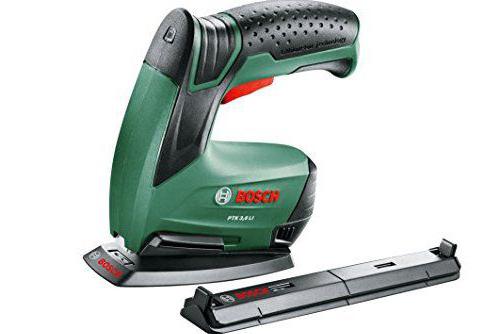Assembly operations do not always involve the use of special machines and machine tools, as well as traditional fasteners. An alternative way to implement such tasks is to use construction staplers. They not only replace more powerful equipment and traditional nails, but also allow you to make connections accurately, accurately and without excess dirt. The battery stapler is especially popular, which can be used without reference to the mains.
Key Features
The performance of a stapler is determined by the voltage at which its battery operates. On average, it varies from 3.6 to 14 V. In practice, the difference between the two extreme voltage values can be felt in the ability of the device to hammer nails of certain sizes and duration of operation without charging. For example, a 3.6 V rechargeable stapler allows you to work with brackets about 15 mm long and lasts for 1.5-2 hours. Models with a voltage of 14 V will provide ease of use with hardware longer than 20 mm, saving the user the need for recharging the charge for 3-4 hours
It is important to consider other ergonomic issues. So, if a capacious battery makes possible long-term operation, a capacious cassette unit will also allow serial fastening operations without frequent replenishment of brackets. The average store capacity is 150-200 hardware. In addition, a powerful battery stapler will inevitably have a large mass. This is not always convenient, since the operator will have to expend effort on centering the tool at every drive. Light models usually weigh no more than 1 kg, and high-performance devices - 3-4 kg.
Varieties
Manufacturers of driven automatic machines offer two versions of staplers. The basic version is a tool that works with staples and studs of small and medium size. Such models can be used to fasten upholstery, film, thin wood panels, etc. To work with thicker and tougher materials, it is recommended to use a full nailing battery stapler, the power of which is enough to service some traditional floor and claddings. It can be used to fix linoleum, thin laminate, carpeting and various wall coverings.
Bosch PTK 3.6 model reviews

If you need a small-sized, lightweight and ergonomic device for working in domestic conditions, then it is difficult to find an option better than this model. As users note, the modification device is sharpened for non-professionals, but in terms of the quality of its tasks, the model copes optimally. Another thing is that not everyone is satisfied with the performance of the tool. It is important to understand that the Bosch PTK 3.6 cordless stapler is representative of low-power equipment, has a modest magazine with 100 brackets and a low driving frequency. On the other hand, the owners of the model include the design with the ability to accurately position, a charge indication system and battery capabilities per se. This is the case when an entry-level tool provides a fairly long work - for 5 hours. True, the workflow may also be interrupted due to the emptying of a low-cost store, not to mention the dubious expediency of using such an apparatus in large-scale repair and construction operations.
Reviews on the model Makita DPT351Z
In a way, this is the opposite of the previous stapler, which is focused on a professional master. Tool users emphasize its versatility, versatility, ergonomics and design reliability. Actually, the quality of the case and the overall implementation of the internal device is what makes the Japanese stapler similar to the German device. But the Makita battery stapler in the DPT351Z modification operates at a voltage of 18 V, which greatly expanded its operational qualities. The owners of the device indicate that it copes well with driving pin nails about 35 mm long. Accordingly, this stapler can confidently perform fastening of floor coverings and other finishing materials, which users are pleased to note in their reviews. The backlight and the modern mechanism for installing the brackets in the store will contribute to ease when performing work actions.
Reviews on Ryobi ONE + Models
Ryobi also has high-performance staplers in its line of products that deliver high-quality performance and user-friendliness. According to many owners, representatives of the ONE + family are optimally suited for the role of a universal tool of this type. These models also provide a high driving frequency, support the use of nails up to 65 mm long and are ergonomically designed. Along with these advantages, the Ryobi cordless stapler is cheaper than the nearest competitor from Makita. If the Japanese 18 V model is available on the market for 18-19 thousand rubles, then a model with similar characteristics from Ryobi can be purchased for 15-16 thousand. It is not at all obvious that the second option will lose as a more eminent competitor.
Conclusion
Before starting a review of the proposed staplers on the market, it will not be out of place in principle to determine how suitable the battery version is in a particular case. Of course, such modifications are more profitable compared to network analogues due to the possibility of battery life. But on the other hand, even the lightweight and compact Bosch PTK cordless stapler in the PTK series may be less convenient than the compact network version with similar performance. This difference is directly affected by the presence of the battery pack in the design, which, as is often mentioned in reviews, makes the device heavier. Also, the choice may arise on the type of battery itself. As many experts and owners note, it is better to give preference to more reliable and environmentally friendly lithium-ion cells, although they are more expensive than nickel-cadmium or silicon batteries.